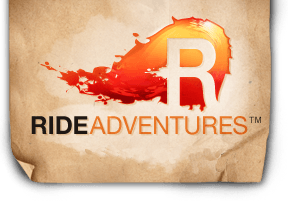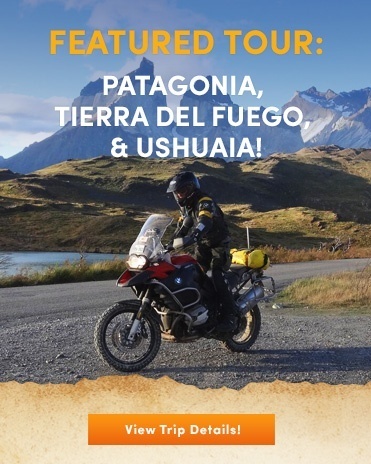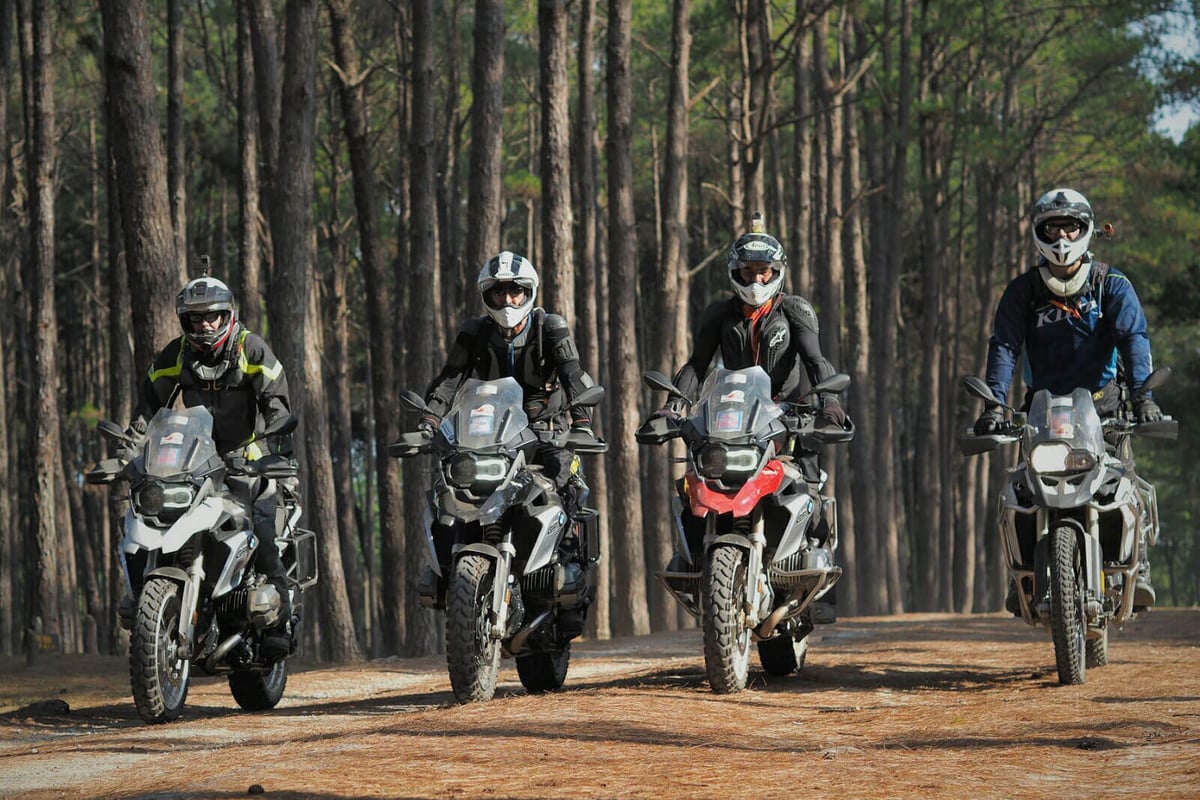 Disclosure: RIDE Adventures is a participant in the Amazon Services LLC Associates Program as well as other affiliate programs, designed to provide a means for us to earn fees by linking to Amazon and affiliated sites at no extra cost to you. Please see our Disclosure for more details.
Disclosure: RIDE Adventures is a participant in the Amazon Services LLC Associates Program as well as other affiliate programs, designed to provide a means for us to earn fees by linking to Amazon and affiliated sites at no extra cost to you. Please see our Disclosure for more details.From biker movies like ‘Easy Rider’ to popular biker anthems like ‘Born to be Wild’, motorcycles have always been romanticized in American pop culture. Whether you’re a newbie wondering how to choose a motorcycle or a person with a dream just wanting to know a few things before buying a motorcycle, we’ve got you covered.
Buying a motorcycle can be one of the best and most exciting decisions you’ll ever make, and this article will take you through everything you need to know before buying your first bike.
Welcome to the biking brotherhood. Your life is about to change, and you’re about to rev it up. As Twisted Sister so eloquently put it, “you’ve got to ride to live, live to ride!”First Things First: How to Choose a Motorcycle?
Many factors come into play when you want to choose a motorcycle suitable for your needs. We’ve compiled a short list of must-knows in various categories to help you decide
How to Choose a Motorcycle Suitable for Dirt Riding
Making the investment in such an expensive machine, one that involves such physical and mental integration with our minds and bodies, somewhat begs for a test ride. Many dealerships don't offer test drives on dirt bikes though. Some manufacturers host demo-days which are great to take advantage of, or hopefully you have the option of either borrowing one or renting a bike you’re interested in.
However possible, the overwhelming majority of your doubts and questions can be removed with just a little time riding any given machine. (Of course this would be done after you’ve gained your motorcycle endorsement, and therefore have experience on at least one motorcycle.)
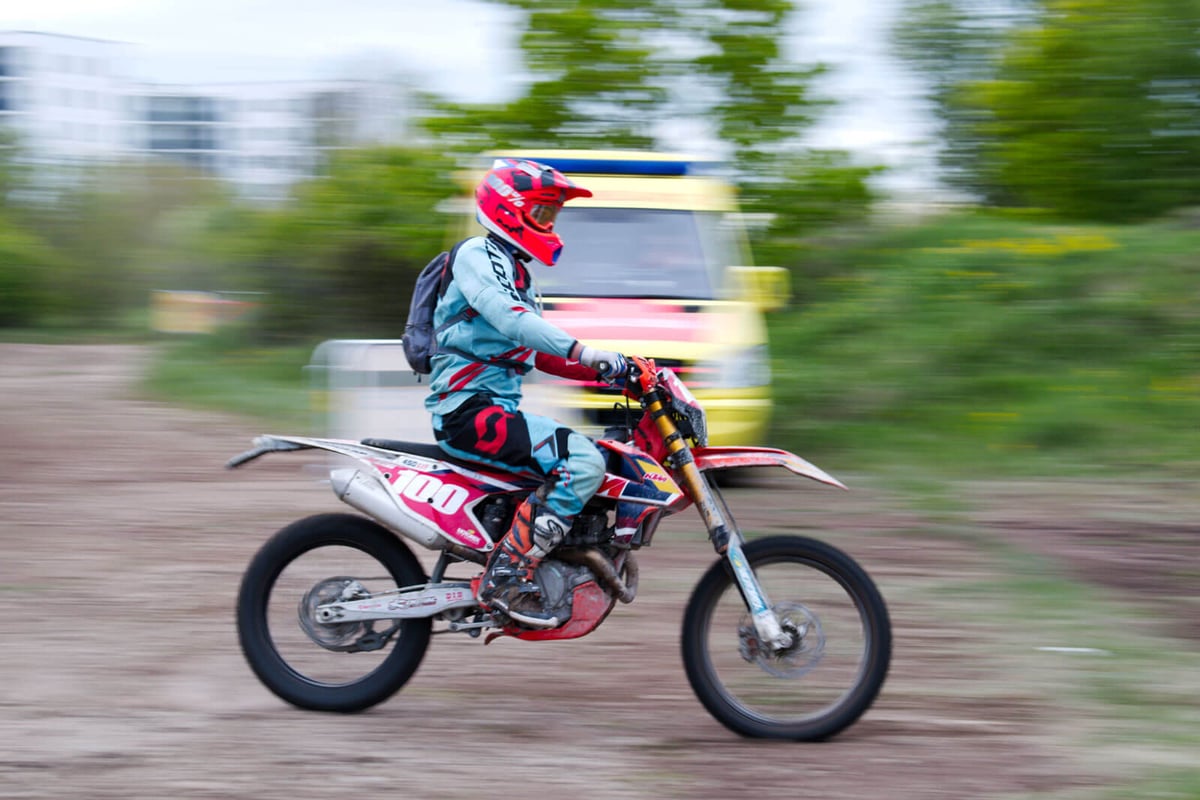 Let’s say you have a particular brand and model in mind. What now? Well, on dirt bikes the infamous observation that ‘size matters’ really does come into play. Buy a bike that is comfortable and at a good ride height for you, as your overall safety and comfort depend on it. A good way to test your fit on any bike, is to sit forward on the saddle and see if your feet touch the ground.
Let’s say you have a particular brand and model in mind. What now? Well, on dirt bikes the infamous observation that ‘size matters’ really does come into play. Buy a bike that is comfortable and at a good ride height for you, as your overall safety and comfort depend on it. A good way to test your fit on any bike, is to sit forward on the saddle and see if your feet touch the ground. If they won’t reach… you’re too short, sport, and should be looking at shorter options (at least to start.) One of the goals in choosing a dirt bike is to have enough suspension travel and ground clearance to enjoy various terrains, so while being able to stand flat-footed over the bike might not be essential, having at least one-third of each foot on the ground is a good idea. This indicates that you’re able to keep your balance by putting your foot down quickly when situations call for it, but not wasting any range of movement by the aforementioned suspension travel and ground clearance.
If they won’t reach… you’re too short, sport, and should be looking at shorter options (at least to start.) One of the goals in choosing a dirt bike is to have enough suspension travel and ground clearance to enjoy various terrains, so while being able to stand flat-footed over the bike might not be essential, having at least one-third of each foot on the ground is a good idea. This indicates that you’re able to keep your balance by putting your foot down quickly when situations call for it, but not wasting any range of movement by the aforementioned suspension travel and ground clearance.
How to Choose a Cruiser for Commuting
Buying a motorcycle suited for road driving or commuting can be a tough buy to make as well, partially because there are so many models and options out there. We break this category - cruising the streets - up into three subcategories to make the decision making process easier for you. Again, the most important question you need to ask is: What do I want to do with this bike?
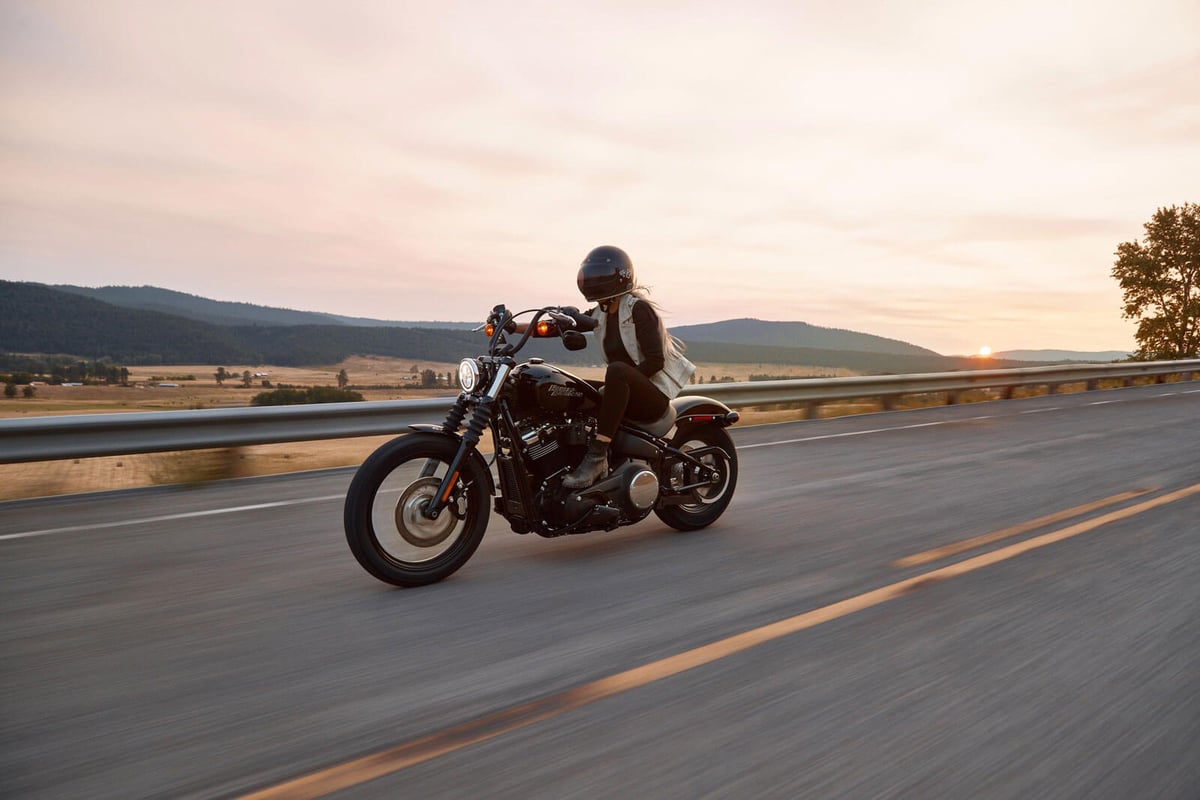 If buying a commuter bike for daily use, consider very basic or “naked” bikes that might best fit into traffic, parking or other situations. Comfortable with neutral riding positions and no fairings that force a rider to be hunched over, having a bike with options for adding storage or luggage might be very important to you as well.
If buying a commuter bike for daily use, consider very basic or “naked” bikes that might best fit into traffic, parking or other situations. Comfortable with neutral riding positions and no fairings that force a rider to be hunched over, having a bike with options for adding storage or luggage might be very important to you as well.
There’s any range of power and features to be found in simple, standard bikes, so you can go from the most fuel efficient options that will still move you around plenty quickly, on up to adrenaline-pumping machines that are perhaps more appropriate once you’ve been riding a few years. The more simple a bike is, the fewer parts it will probably have on it to be damaged, if the bike is occasionally dropped or falls over from time to time (it will happen, don’t be embarrassed.)
Cruisers for Casual Riding
If your wishes are more for casual slow cruising Sunday rides, not focused on commuting, parking, traffic, etc. then perhaps to look in the “Cruiser” category. Long, low-slung motorbikes, often chromed-up and intended for relaxed rides, these often torque-rich engines can put huge smiles on faces, and the comfortable seat (usually quite low) makes them comfortable for most riders to enjoy.
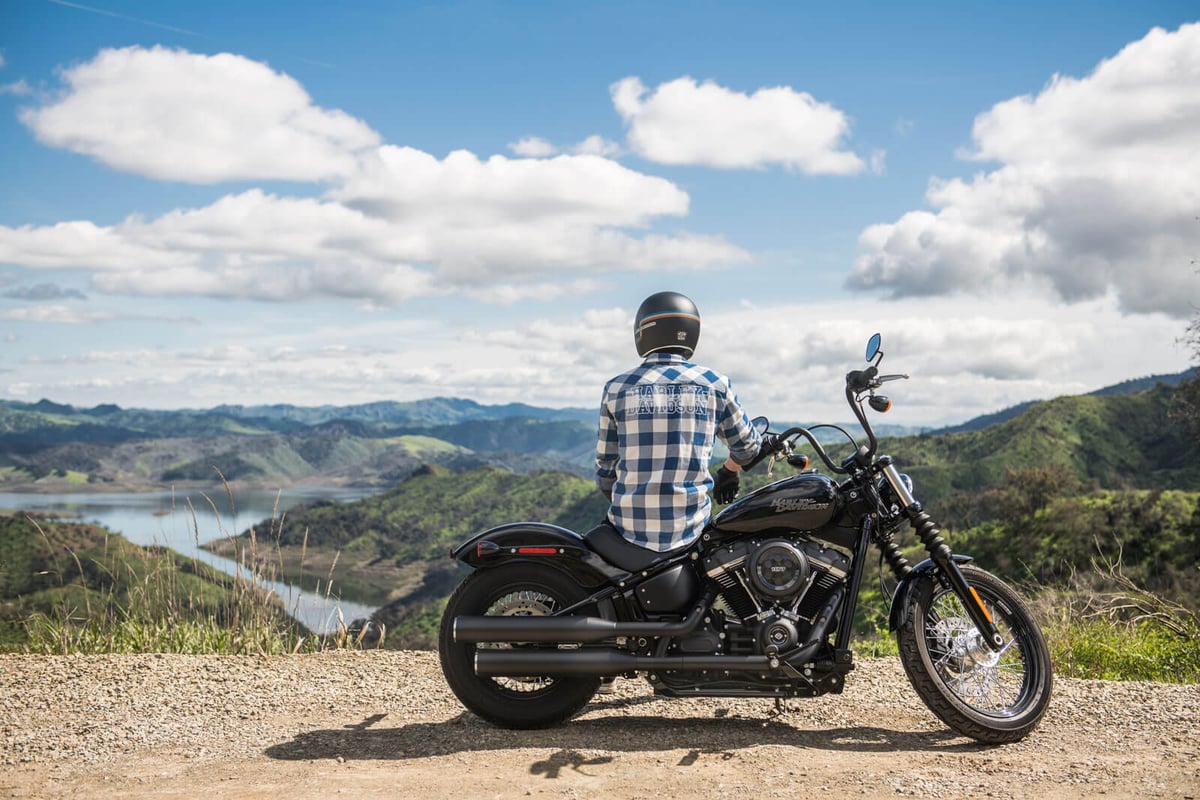 When buying a cruiser, same approach we mentioned about buying a dirt bike should be considered in that it’s best to get into something that fits your overall stature and physique. The baby-Harleys (Sportsters), Virago’s and Honda Shadows are a great starting place in this category. Pushing yourself to ride something much larger than you’re comfortable with may inadvertently reduce your willingness to get out there and learn. Not easy to admit, plenty of riders have made that expensive mistake, with a bike sitting mostly-unused in their garage.
When buying a cruiser, same approach we mentioned about buying a dirt bike should be considered in that it’s best to get into something that fits your overall stature and physique. The baby-Harleys (Sportsters), Virago’s and Honda Shadows are a great starting place in this category. Pushing yourself to ride something much larger than you’re comfortable with may inadvertently reduce your willingness to get out there and learn. Not easy to admit, plenty of riders have made that expensive mistake, with a bike sitting mostly-unused in their garage.How to Choose a Motorcycle Built for Speed
If going fast is your goal, and you see “cruising the streets” as lingo for “let’s get an adrenaline high while we dance with the gods of speed,” you’re probably looking for a sportbike. (Editor’s note: Of course we never condone riding in excess of posted speed limits, or faster than any situation calls for.)
 Sportbikes are typically engineered with one end-goal in mind: To go really far, really FAST! Although sportbikes are not the most comfortable bikes to ride, so traveling great distances usually isn’t going to happen without some regular conditioning. The faster we ride on these crotch rocket bikes, the more the oncoming winds help push our torsos upright, so the hunched-over position isn’t as bad as it looks. Still, just visualizing the differences of how you’ll sit on a sportbike vs. a cruiser can help one imagine a total amount of willingness to ride on a given day.
Sportbikes are typically engineered with one end-goal in mind: To go really far, really FAST! Although sportbikes are not the most comfortable bikes to ride, so traveling great distances usually isn’t going to happen without some regular conditioning. The faster we ride on these crotch rocket bikes, the more the oncoming winds help push our torsos upright, so the hunched-over position isn’t as bad as it looks. Still, just visualizing the differences of how you’ll sit on a sportbike vs. a cruiser can help one imagine a total amount of willingness to ride on a given day.
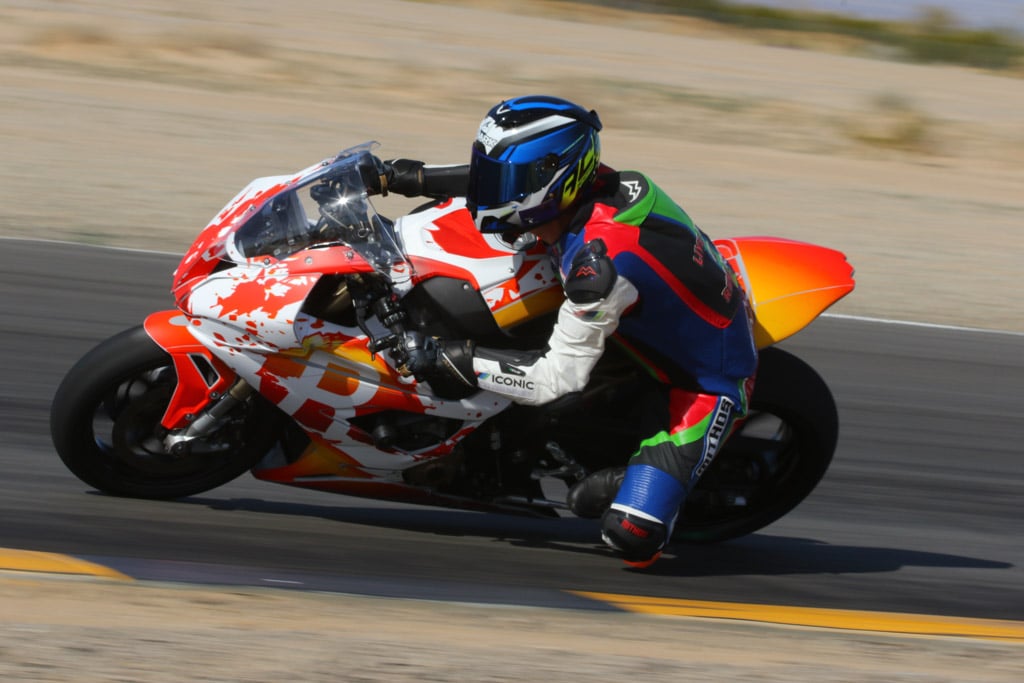
When deciding how to choose a motorcycle remember, virtually every motorcycle built has the ability to get a rider up to speed and into situations where adrenaline and the dynamics of riding can make for dangerous situations, so take a step back, perhaps start on the most modest end of the spectrum, and keep in mind: There will always be other bikes out there for you to upgrade to. Twisting the throttle on a 1000cc, 190 horsepower bike that weighs only 400lbs sure can be fun … but the funny thing with adrenaline is, it can sometimes get the best of us and force bad decisions.
How to Choose Motorcycle That's Suitable for Dirt and Pavement
If the thought of a dual sport motorcycle gets your heart beating, it’s probably for good reason. Bikes built for both pavement and dirt riding, the option to no longer wonder “where does that road go?” on your way home from work can lead us to so many great experiences. As such, the dual sport category has seen tremendous growth in recent years. This flexibility, this opportunity for total freedom has been the primary focus of RIDE Adventures over almost 10 years now, as can be witnessed across our website. Dual sport bikes are often called “Adventure Bikes,” in that they can lead us to exactly that. The Swiss Army Knife of the motorcycle world, the one that opens the most possibilities.
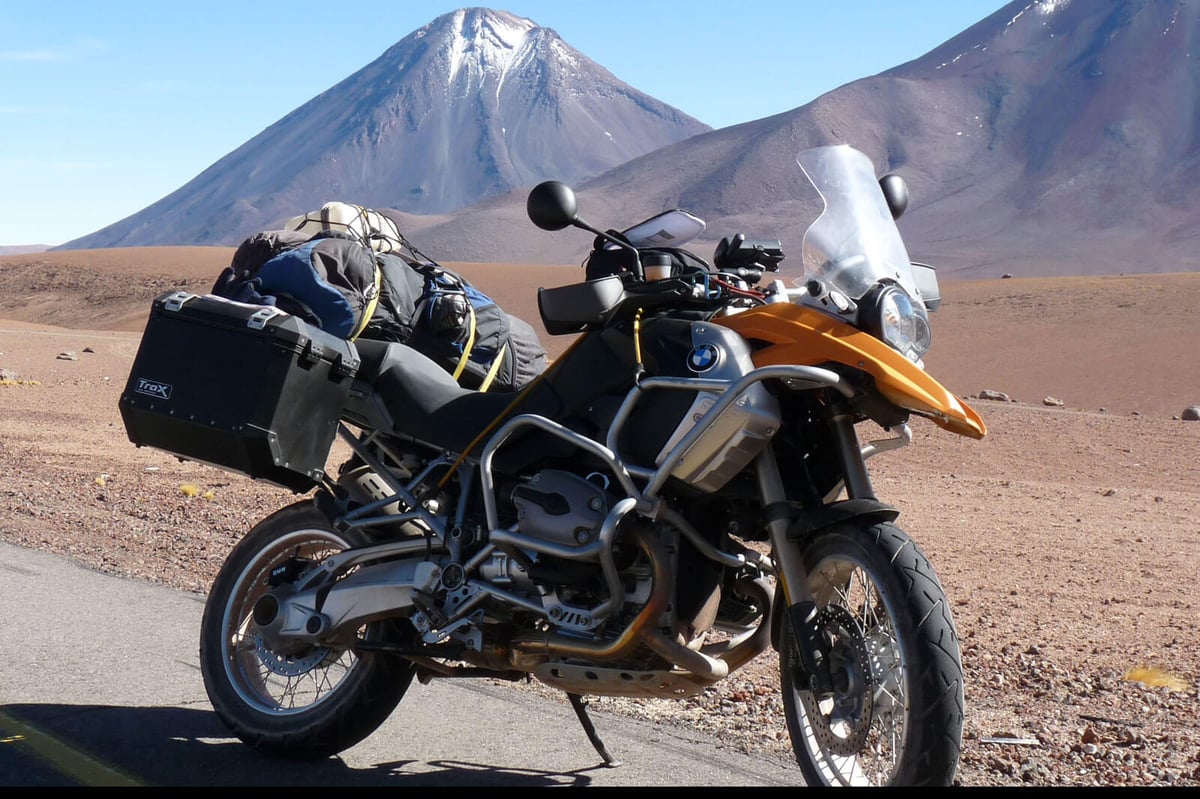 Duals sport adventure bikes are usually easy to ride, except for one point: Shorter riders, or those with short legs may struggle to find a bike that they can stand over, as by definition, an adventure bike needs the suspension travel and ground clearance to handle a variety of terrains. Lowering kits can be purchased, suspension can be softened, and some modifications can improve the situation, and hopefully so because these generally agile machines again, open the most possibilities. The map was wrong, and the pavement suddenly turned into a gravel road with huge potholes? Who cares, just keep on riding. Explore, discover, and see what you want to see with a great dual sport bike.
Duals sport adventure bikes are usually easy to ride, except for one point: Shorter riders, or those with short legs may struggle to find a bike that they can stand over, as by definition, an adventure bike needs the suspension travel and ground clearance to handle a variety of terrains. Lowering kits can be purchased, suspension can be softened, and some modifications can improve the situation, and hopefully so because these generally agile machines again, open the most possibilities. The map was wrong, and the pavement suddenly turned into a gravel road with huge potholes? Who cares, just keep on riding. Explore, discover, and see what you want to see with a great dual sport bike.How to Choose a Vintage Motorcycle
Retro bikes have become very popular lately, and many manufacturers have a retro offering in their line-up. Buying an actual classic rather than a modern bike with a retro feel can often save you plenty of money though, and still feel very similar to new versions of old bikes.
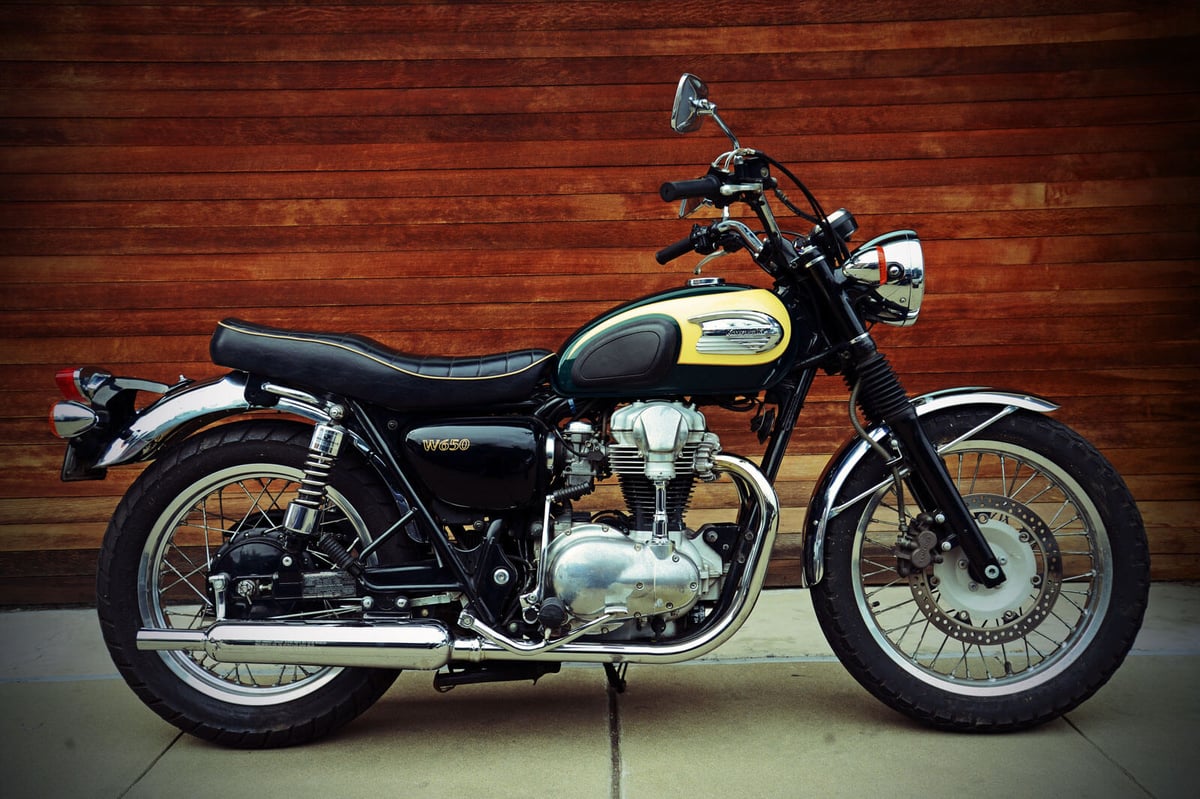 As is true with any machine, one in less-than-perfect condition will cost less than a new one, so buying a second-hand bike can leave some budget open to buy add-ons and customize if you wish.
As is true with any machine, one in less-than-perfect condition will cost less than a new one, so buying a second-hand bike can leave some budget open to buy add-ons and customize if you wish. Age is another consideration - usually the older the bike, the rarer (and more expensive) the spare parts will be. A good first classic would have the 60’s or 70’s as a birth date. Any newer and you’re buying an old bike and not a vintage. Any older, and you’re buying something that is probably very hard to maintain. A vintage biker usually follows a lifestyle of pizazz - so make sure that your new old bike fits with your personality!
Age is another consideration - usually the older the bike, the rarer (and more expensive) the spare parts will be. A good first classic would have the 60’s or 70’s as a birth date. Any newer and you’re buying an old bike and not a vintage. Any older, and you’re buying something that is probably very hard to maintain. A vintage biker usually follows a lifestyle of pizazz - so make sure that your new old bike fits with your personality!
How to Choose a Scooter
Why are these even on our list? I thought this was all about how to choose a MOTORCYCLE not a scooter. Hey, scooters (mopeds, to some) have been around forever and there has been somewhat of a revival lately. Scooters come in various packages, with most engines being between 125 and 200 cc’s. If you’re going to be riding in the city and follow a modern lifestyle and minimalist approach, a scooter may be an ideal bike for you, as their small size and lightweight nature make them very easy to find parking for (often along-side actual bicycles near a rack.)
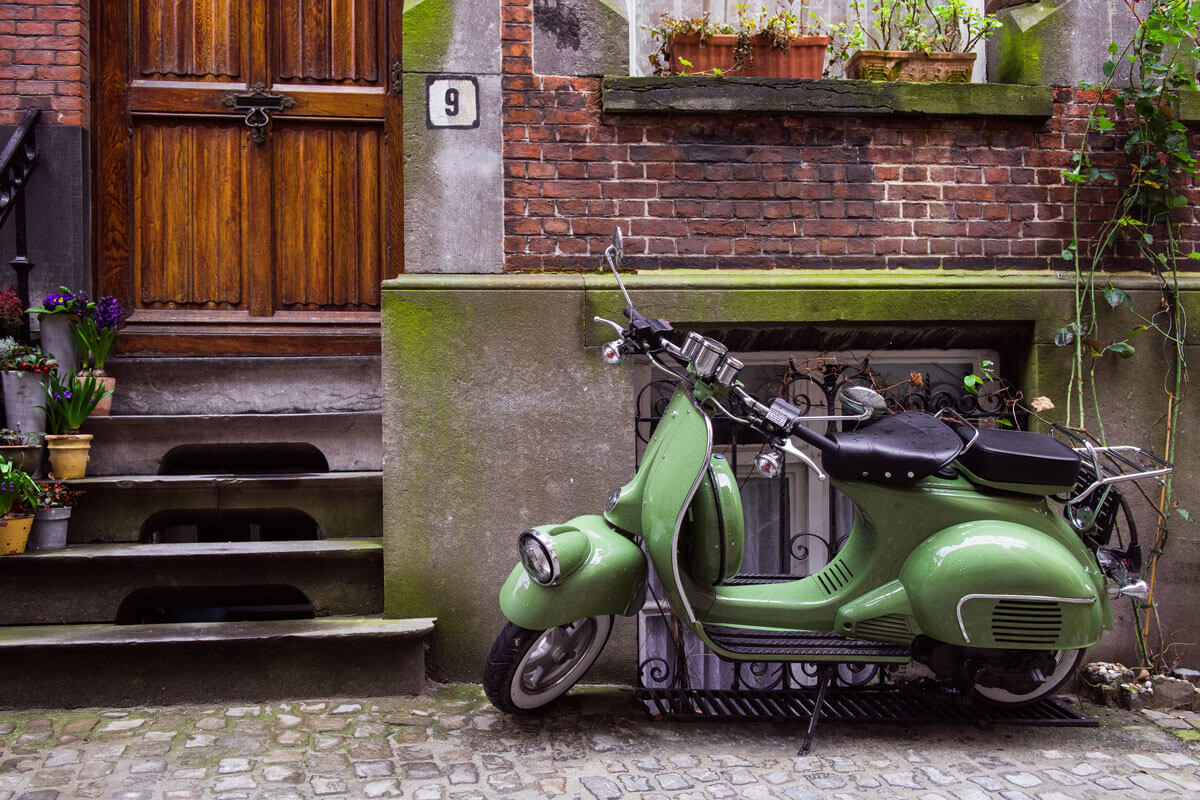 Many scooters even have an automatic transmission or clutch, so riding them is incredibly easy, many come with good storage and carrying options, and being fairly lightweight, they come with a bit lower risk than full-sized motorcycles … in case something ever does go wrong. Low cost (some) and very handy to have, spending a day with one will often answer your questions on whether it’s an investment you want to make.
Many scooters even have an automatic transmission or clutch, so riding them is incredibly easy, many come with good storage and carrying options, and being fairly lightweight, they come with a bit lower risk than full-sized motorcycles … in case something ever does go wrong. Low cost (some) and very handy to have, spending a day with one will often answer your questions on whether it’s an investment you want to make.What to Know Before Buying a Motorcycle
Insuring and Licensing Your First Motorcycle
While there are exceptions for motorcycles with smaller engines in some states and countries, everyone needs an official motorcycle license obtainable from your local DMV in order for you to safely and legally drive a motorcycle. Licensing isn’t only important for legal reasons though. Most municipalities will only provide a license after thorough rider testing, both by written test, and actual riding skills, which all combine for a greater likelihood of safe travel in the future.
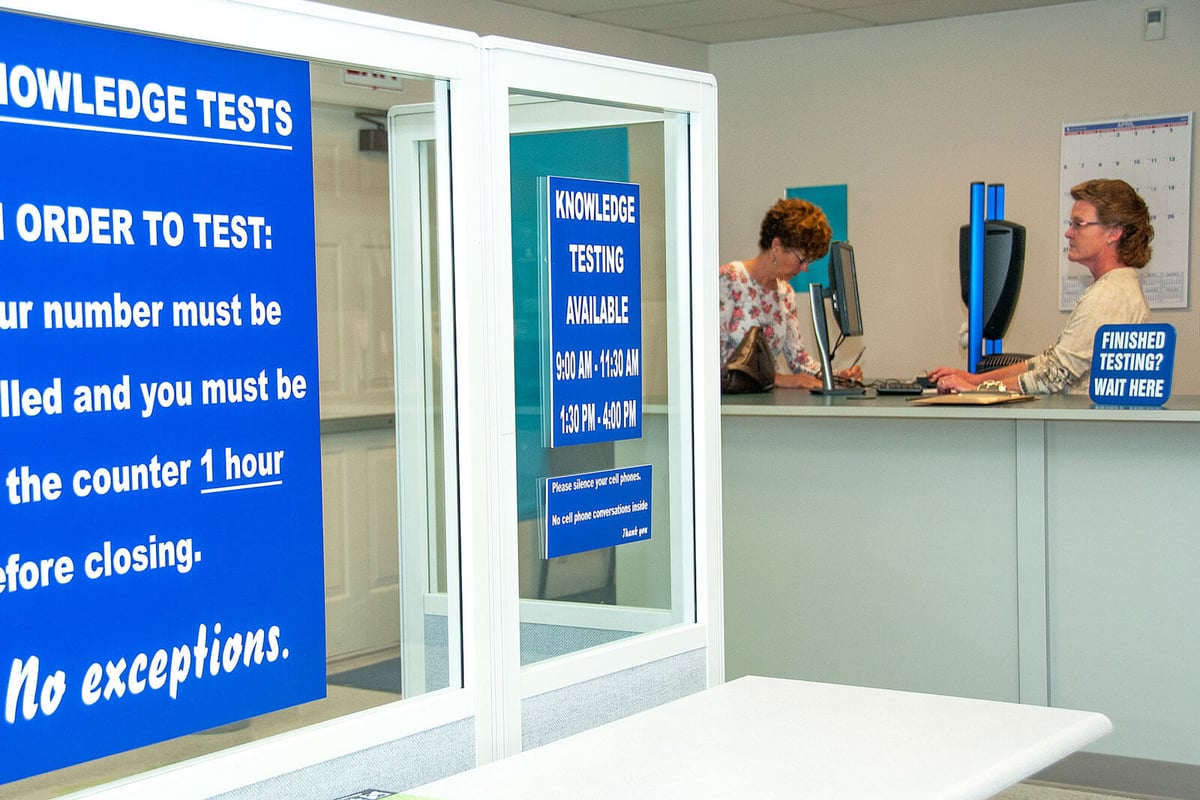
Be sure to check the specific requirements applicable in your state/country before purchasing a new motorcycle, as the waiting time to even get testing done can sometimes be multiple months. If you already have a regular passenger vehicle driver’s license, the motorcycle endorsement is typically just added to it.
In the U.S. for example, the Motorcycle Safety Foundation’s (MSF) Basic Rider’s Course is often the starting place. The cost and length of this course differ from state to state - but, upon completion, riders are provided with completion documents to take to the DMV, and often with further testing, exchange it for a motorcycle license.
Motorcycle Insurance
Just like with regular cars and trucks, most countries around the world require a vehicle to be insured for 3rd party liability in order to be legally registered for use on public roads.
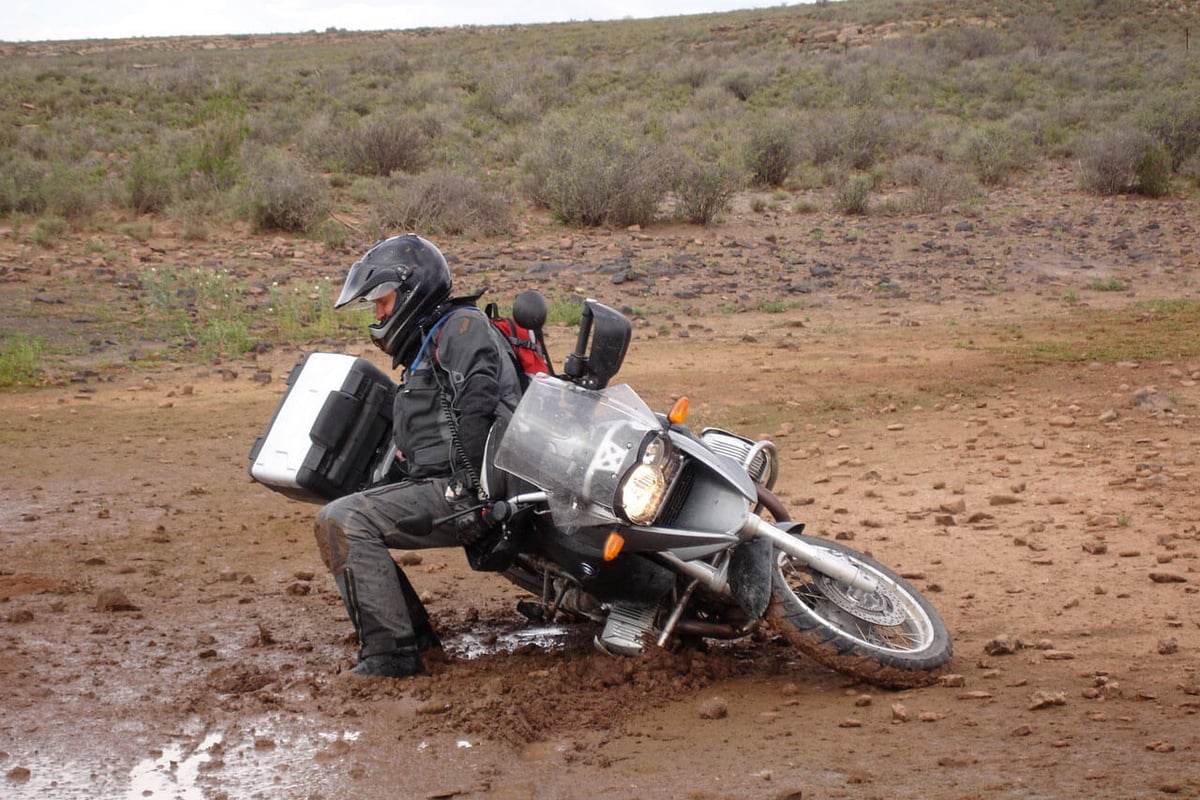 In addition, it’s a good idea to protect both yourself and your investment with proper medical insurance, and comprehensive vehicle coverage to protect the investment in the case of theft, damage, or incidents with uninsured or underinsured motorists.
In addition, it’s a good idea to protect both yourself and your investment with proper medical insurance, and comprehensive vehicle coverage to protect the investment in the case of theft, damage, or incidents with uninsured or underinsured motorists.How Much Power Should I Start with for My First Motorcycle?
First, let’s explain that “cc’s” stand for “cubic centimeters, which represent the displacement inside an internal combustion engine. (“What?”) In the fewest words possible: the greater the displacement, the greater the opportunity to generate heat and therefore power within the engine, making it possible to accelerate more rapidly, or achieve greater top speeds.
This does not mean, however, that the larger the engine is in cc’s, the more powerful it is. Compression ratios found within the engine’s displacement, valve trains, and a long list of other factors all help explain why some 600cc engines may produce more power than a 1000cc version. Add to this notion the importance of power-to-weight ratios, and it can be explained why some 600cc sport bikes that weigh 400lbs are so much faster than 1600cc cruisers that weigh 800+ lbs.
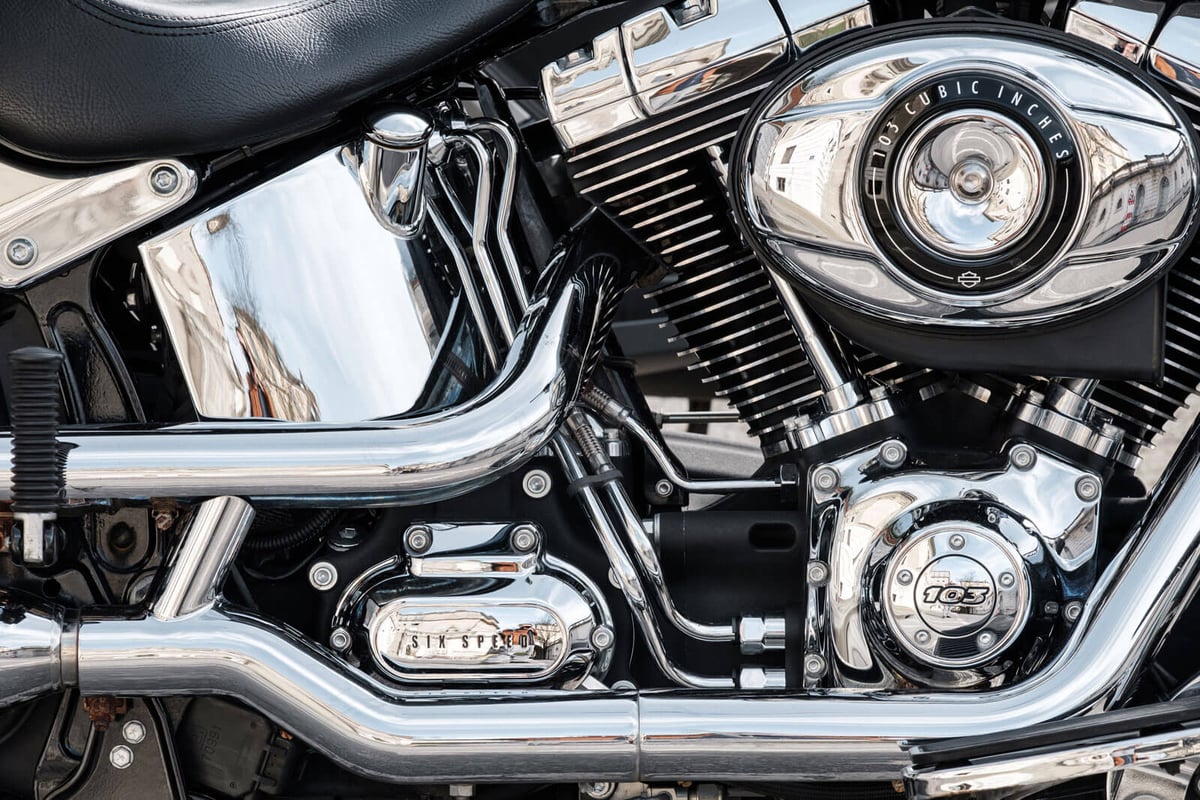 So the question often comes up: How many cc’s should a beginner choose for their first bike? Again, understand that engine size isn’t the only factor here, and that it’s potential for creating power is also influenced by how heavy the bike is. Also factors like the type of transmission, chain, belt, or shaft drive, wheel sizes, tire types, etc. can rob a motorcycle’s power, so these are all factors that greatly influence how fast you’ll go.
So the question often comes up: How many cc’s should a beginner choose for their first bike? Again, understand that engine size isn’t the only factor here, and that it’s potential for creating power is also influenced by how heavy the bike is. Also factors like the type of transmission, chain, belt, or shaft drive, wheel sizes, tire types, etc. can rob a motorcycle’s power, so these are all factors that greatly influence how fast you’ll go.Should You Be Buying a New or Used Motorcycle?
As is true with so many purchases we make, buying a used machine can make for quite an initial cost reduction. Furthermore, buying one that may already have imperfections or damage to it can take some of the pressure off a new rider who is otherwise trying to keep their bike in ‘mint’ condition.
While we’re always cheering for riders to stay safe and avoid injury, it’s been said many times that “the first scratch is the best,” in that once a bike has a little damage, it’s time to relax, have more fun with it, and stop worrying about aesthetics.
_.jpg?width=1200&height=675&name=Email%20pic%20for%20leads%20two%20riders%20(full%20Patagonia)_.jpg) Buying new, of course you’re likely to get the most technologically advanced options available, often with safety features like ABS (Anti-lock Braking Systems) and Traction Control to help avoid the occasional slip-out of the rear while when a surprise patch of gravel appears before you. However, much like with other categories like sporting equipment, vehicles, shoes, etc, the advancements over a 5-year period of time aren’t great enough to make buying new a ‘no brainer.’
Buying new, of course you’re likely to get the most technologically advanced options available, often with safety features like ABS (Anti-lock Braking Systems) and Traction Control to help avoid the occasional slip-out of the rear while when a surprise patch of gravel appears before you. However, much like with other categories like sporting equipment, vehicles, shoes, etc, the advancements over a 5-year period of time aren’t great enough to make buying new a ‘no brainer.’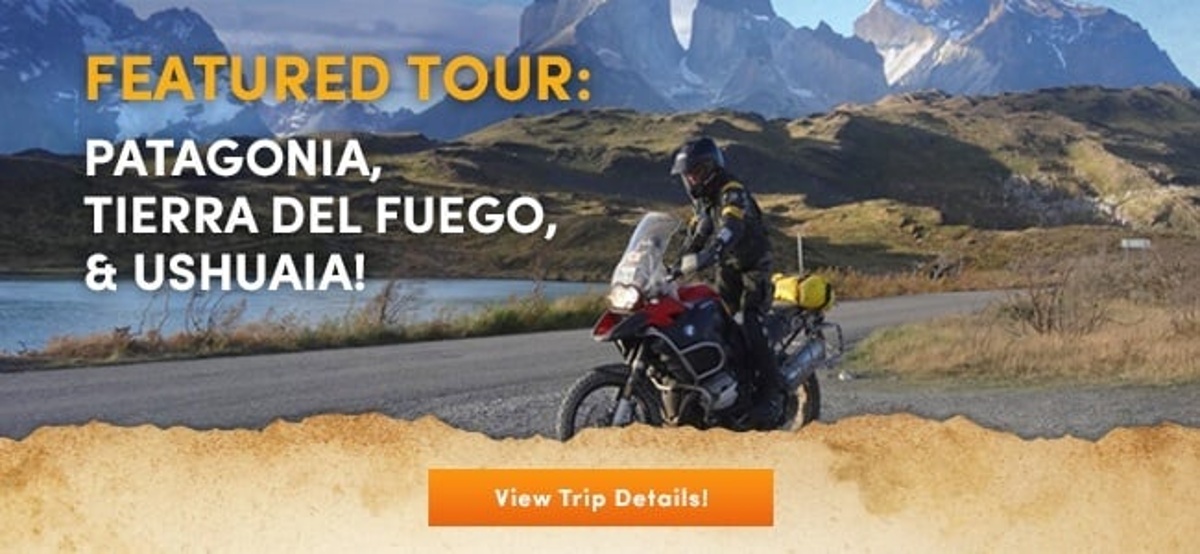 Instead, perhaps find that 5 year old model with modest use, and enjoy the cost savings while still having modern features. Remember, things like insurance, registration, parts, luggage, tires, maintenance are all upcoming expenses, and so saving some money up front can make for more fun riding as time goes on.
Instead, perhaps find that 5 year old model with modest use, and enjoy the cost savings while still having modern features. Remember, things like insurance, registration, parts, luggage, tires, maintenance are all upcoming expenses, and so saving some money up front can make for more fun riding as time goes on.
Should You Buy from a Dealer or a Private Seller?
Whereas it’s often a “buyer beware” situation in the private market, a licensed motorcycle dealer will often be required, both legally and ethically, to fix any known problems on a bike before reselling it. Yes this often comes with a higher price, but such can be worth it in terms of peace of mind.
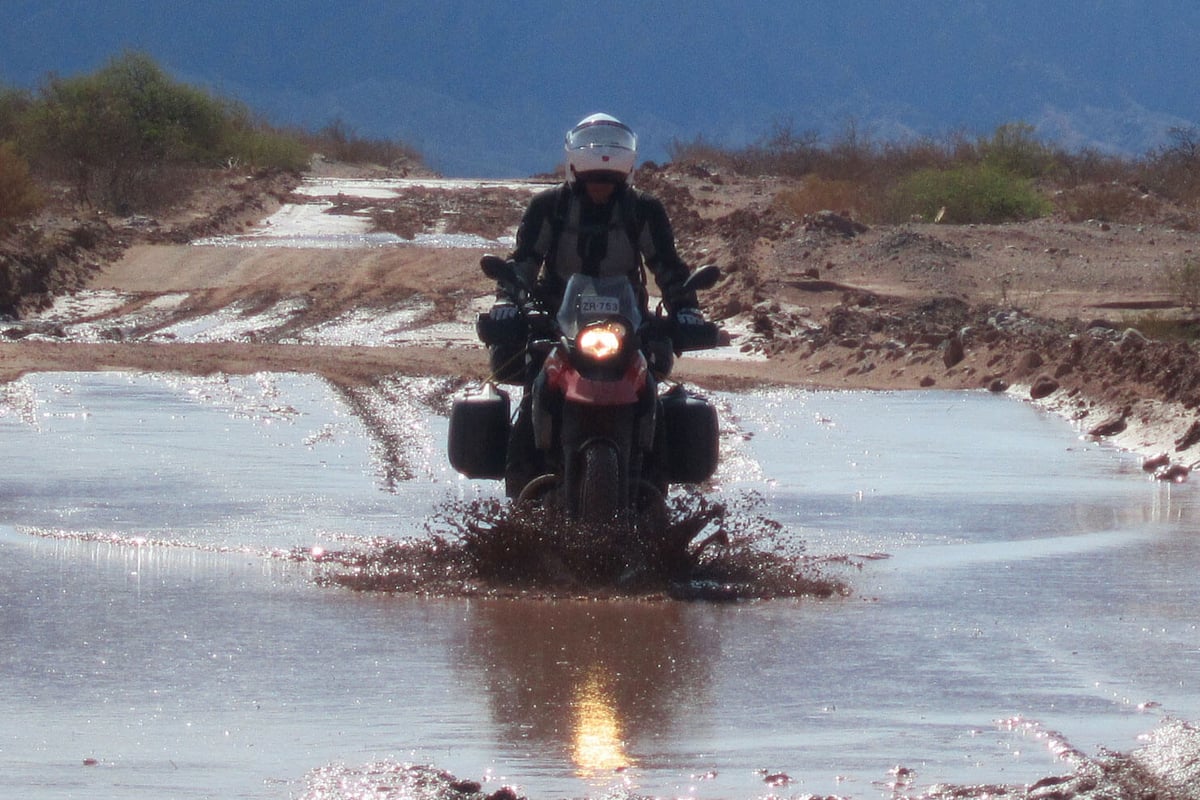 The flipside is that some of us are extremely meticulous when it comes to our investments and our own riding safety. Add to that the charm and adoration many of us have for our motorcycles, and it’s not uncommon to find used bikes available from private sellers that are as well, if not better-maintained than what you’ll get from some dealers. Private sales can allow more room for negotiations in pricing, and possibly a new friend to ride with right from the start.
The flipside is that some of us are extremely meticulous when it comes to our investments and our own riding safety. Add to that the charm and adoration many of us have for our motorcycles, and it’s not uncommon to find used bikes available from private sellers that are as well, if not better-maintained than what you’ll get from some dealers. Private sales can allow more room for negotiations in pricing, and possibly a new friend to ride with right from the start.Did You Leave Room in the Budget for Maintenance?
A very important piece of info that is usually left out of other "What to know before buying a motorcycle" articles is being mindful of all the maintenance costs. Both standard, scheduled maintenance and those unforeseen costs can be quite significant the further you get into riding. As mentioned earlier, not going “all in” with the initial purchase price is a good idea, as tires, maintenance, the occasional tip over or crash, etc. can be quite handy the more you end up riding.
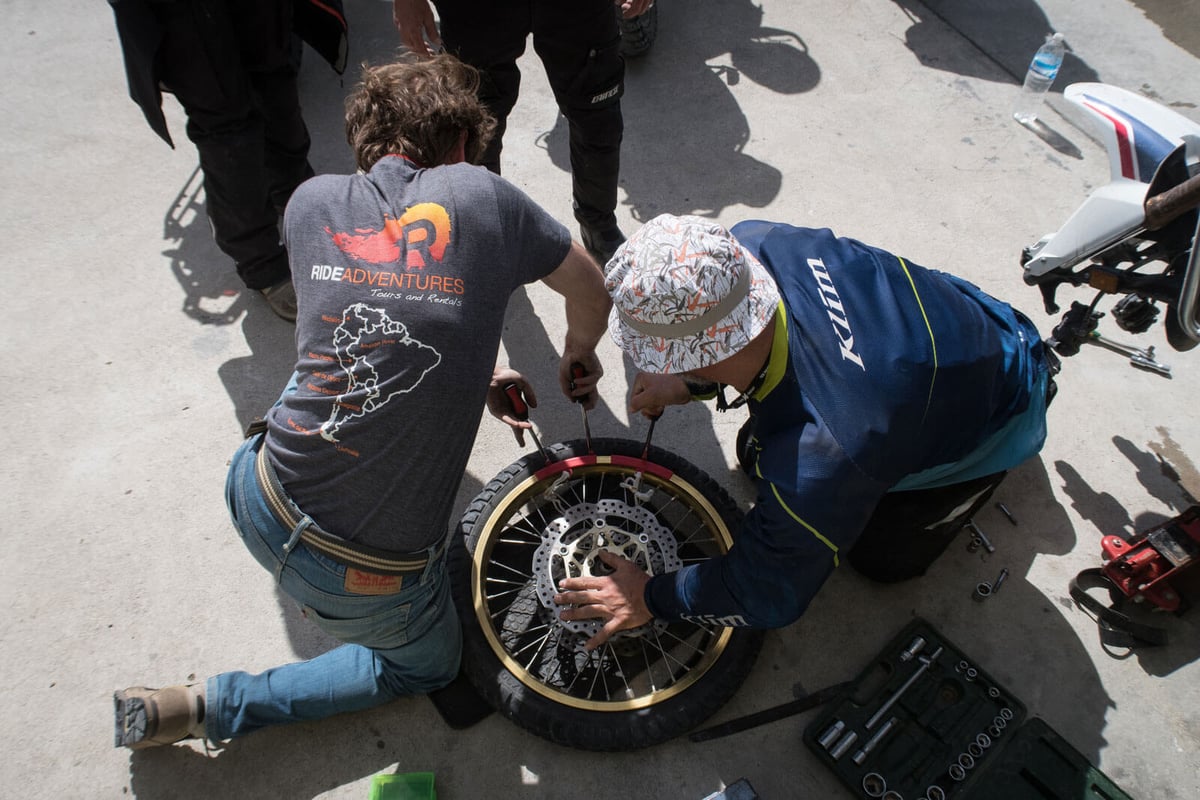 Regular maintenance should be done according to the manufacturer's recommendations, and with the understanding that perhaps the demands you’ll be putting on your bike may expedite needs for such parts replacements. New riders can burn through clutches and brake pads much more quickly than seasoned pro’s, and of course the newer you are, the more likely you may be to drop the bike occasionally, causing damage to parts like mirrors, brake/clutch/shift levers, and other parts that must be replaced for non-aesthetic reasons.
Regular maintenance should be done according to the manufacturer's recommendations, and with the understanding that perhaps the demands you’ll be putting on your bike may expedite needs for such parts replacements. New riders can burn through clutches and brake pads much more quickly than seasoned pro’s, and of course the newer you are, the more likely you may be to drop the bike occasionally, causing damage to parts like mirrors, brake/clutch/shift levers, and other parts that must be replaced for non-aesthetic reasons. Tires are a considerable expense often overlooked by new riders, as they generally do not last as long as they do on passenger vehicles. Depending on how aggressively you ride, your tire choice, terrain, average temperature of the surface you’re on, overall weight, and other factors, it’s not uncommon to see rear tires need changing after only a few thousand miles. Will you change the tire yourself? If not, paying for that service all adds up, so don’t limit your riding wishes by budgetary constraints.
Tires are a considerable expense often overlooked by new riders, as they generally do not last as long as they do on passenger vehicles. Depending on how aggressively you ride, your tire choice, terrain, average temperature of the surface you’re on, overall weight, and other factors, it’s not uncommon to see rear tires need changing after only a few thousand miles. Will you change the tire yourself? If not, paying for that service all adds up, so don’t limit your riding wishes by budgetary constraints.
Don’t Get Hung up on It
Before buying a motorcycle, some folks may have sleepless nights weighing the pros and cons of each motorcycle, doing hours and hours of pensive thinking and comparisons, and weeks of test drives without making a conclusive decision. Yes, do your research, but don’t get hung up on making the perfect decision because of one simple fact: There is no such thing as the perfect bike.
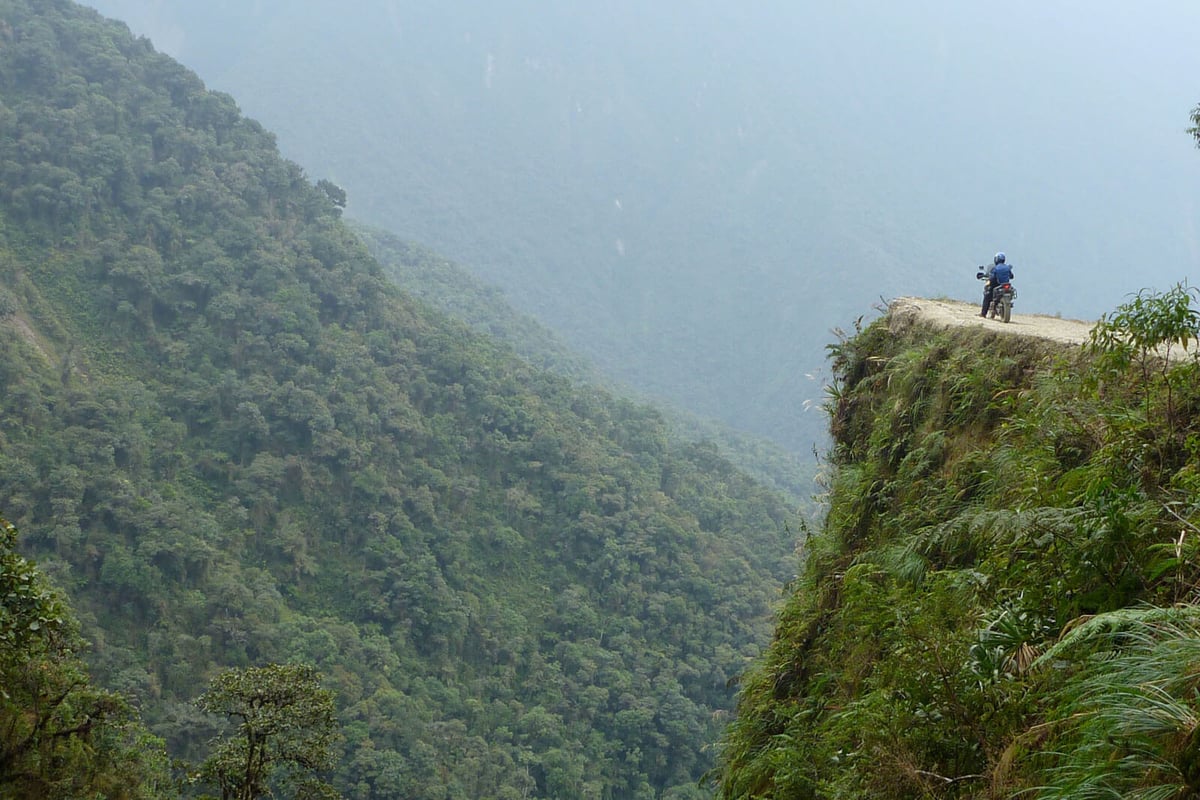 Motorcycle riding, by definition, is a dynamic and ever-changing endeavor as riding surfaces, temperatures, winds, surroundings, and everything in the world is constantly changing around you. What might be the perfect bike for the curve ahead could be replaced by a more perfect bike for the riding you’ll be doing just 20 seconds later. This is true in every situation, be it for commuters, cruisers, or professionals who make their living racing motorcycles or guiding motorcycle tours. So again, do your research, consider your average overall greatest need, and celebrate the learning that comes with perhaps not always having the perfect bike for each situation.
Motorcycle riding, by definition, is a dynamic and ever-changing endeavor as riding surfaces, temperatures, winds, surroundings, and everything in the world is constantly changing around you. What might be the perfect bike for the curve ahead could be replaced by a more perfect bike for the riding you’ll be doing just 20 seconds later. This is true in every situation, be it for commuters, cruisers, or professionals who make their living racing motorcycles or guiding motorcycle tours. So again, do your research, consider your average overall greatest need, and celebrate the learning that comes with perhaps not always having the perfect bike for each situation.Basic Riding Gear You'll Need After Buying a Motorcycle
As can be found in the Free Motorcycle Travel Info section of our website, we are huge proponents of the “ATGATT” philosophy: “All The Gear, All The Time.”
 The ‘nah, it won’t happen to me’ approach to deciding on whether or not to wear crash protection can lead to very short riding careers. When figuring out how to choose a motorcycle don't forget about the gear you will need before your first ride:
The ‘nah, it won’t happen to me’ approach to deciding on whether or not to wear crash protection can lead to very short riding careers. When figuring out how to choose a motorcycle don't forget about the gear you will need before your first ride:
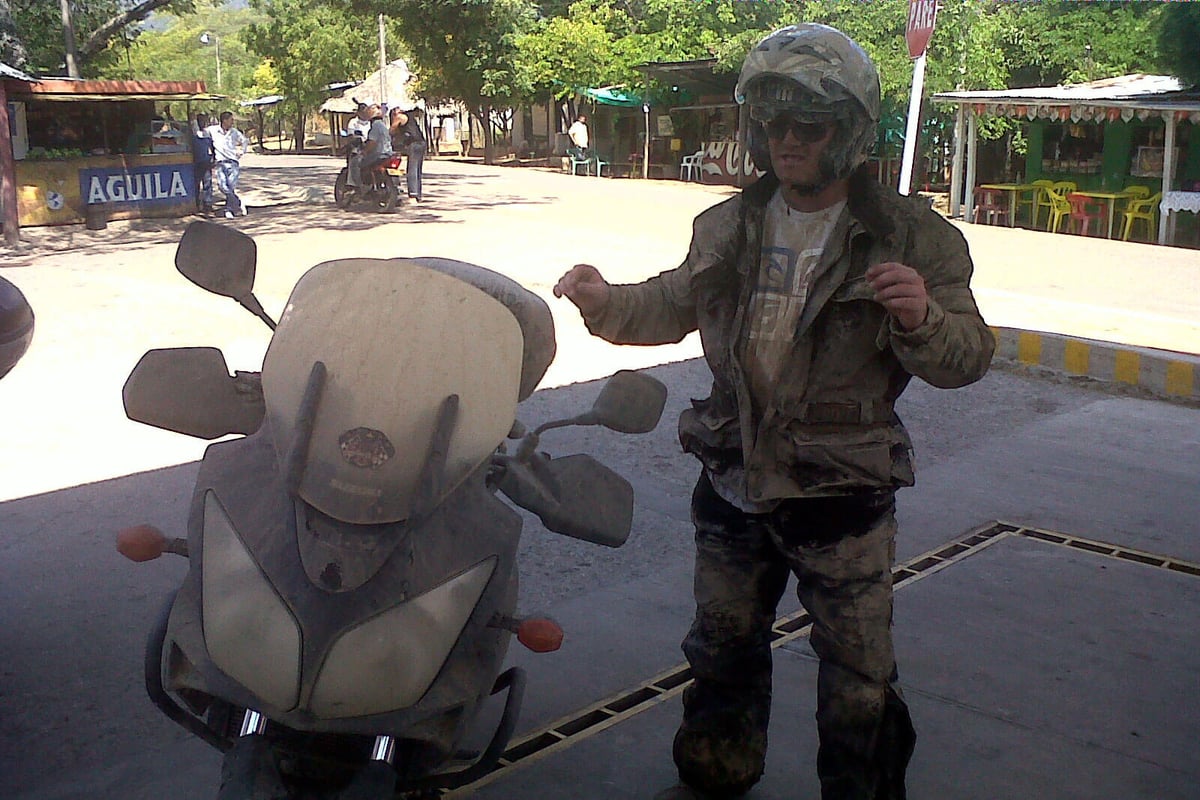
Always wear:
HELMETS
Check for a firm, snug, full-contact-with-your-skull-fit and make sure the safety ratings are in accordance with local requirements. You’ll “get what you paid for” often in terms of quality, features, comfort, quietness, etc. although the difference in protection against impact often varies little, once a certain standard like DOT rating has been met.
Our RIDERS preferred helmets:

CHECK PRICE:
Klim Krios Pro - REVZILLA
Shoei X2 Hornet - AMAZON | REVZILLA
MOTORCYCLE GLOVES
Your hands are often the first thing to hit the ground in a crash or fall, and they’re probably a pretty major part of your life, so why not protect them?
Our RIDERS preferred gloves:

CHECK PRICE:
Klim Badlands GTX (cold weather) - REVZILLA
Alpinestars Celer v2 (warm weather) - AMAZON | REVZILLA
JACKET & PANTS
Either with protective padding built-in, or as purchased via a separate body armor system. It’s expensive? Yep, it can be. But so are hospital bills, knees, elbows, etc.
Our RIDERS preferred Jacket & Pants:

CHECK PRICE:
Klim Badlands Pro Jacket - AMAZON | REVZILLA
Klim Badlands Pro Pant - AMAZON | REVZILLA
MOTORCYCLE BOOTS
Sure, the smaller and lighter they are, the more comfortable they’ll probably be, perhaps providing a greater feel of your brake and shift lever. However, even the biggest of boots break-in after a while, and a small sacrifice in comfort can lead to tremendous gains in terms of protection
Our RIDERS preferred boots:

CHECK PRICE:
Eric's choice - AMAZON | REVZILLA
Garrett's choice - AMAZON | REVZILLA
Christine's choice - AMAZON | REVZILLA
Tyler's choice - AMAZON | REVZILLA
NECK BRACE
Gaining popularity the past 15 years, and often used in other areas of motorsports, hopefully we never have to find out if they actually work or not … but given logic, it’s hard to imagine why they wouldn’t.
Our RIDERS preferred Anti-neck breakers:

CHECK PRICE:
Alpinestars BNS
The 3 Most Common Mistakes to Avoid When Buying a Motorcycle
1. Choosing the Wrong Size
Avoid the most common mistake that comes with buying a motorcycle, that excitement of ‘riding the biggest horse’ possible. As a beginner, choose a motorcycle that you can stand over securely, keeping in mind that uneven road surfaces below might even require a smidge more reach. A bigger bike or engine doesn’t necessarily mean a bigger smile, as a properly-fitted bike for each rider will undoubtedly lead to the best and safest miles and smiles. Truly a case where “size does matter,” choosing the right size for you will … dare we say … lead to the greatest satisfaction.
2. Overspending
Remember the aforementioned notion that, the first expense is buying the motorcycle. Keeping it insured, registered, fueled, with fresh tires, replacement or add-on parts, and with camping, hotels, or meals on the road … all adds up. The headache of debt riding with you on that bike is just not worth it, and so leaving some budget open for the inevitables will make perfect sense.
3. Choosing the Wrong “Type” of Bike
Salesmen might have a reason to urge you into a certain bike, your friends might all be into a certain category like cruisers, sport bikes, or dirt bikes, but ultimately, isn’t the bike supposed to be what suits you best?
Consider the aforementioned categories of bikes, spend time on YouTube or reading about these various options, and make sure your money is being spent on the category of bike that you will get the most use out of. Once you have your motorcycle endorsement and perhaps some time on a few bikes owned by friends, or from demos, renting a motorcycle from a reputable rental provider can be a great way to reduce your risk of a purchasing error.
Keep in mind your possible liability for damage to a bike when renting, which still can be an overall cost savings over possibly damaging your own bike, or buying the wrong one for your average use.
More of a visual Learner? Check out our YouTube on the subject 👇
